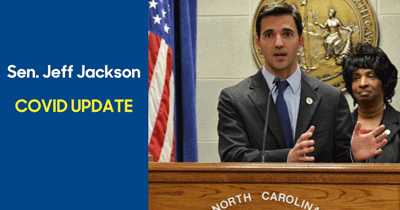 Here's the situation with COVID in NC Here's the situation with COVID in NC
Sen. Jeff Jackson , images
courtesy Jackson
Many of my constituents have told me they feel like there's a lot of
bad information out there about the COVID situation - but we've also
reached a point where people are tired of being told what to think.
They're very skeptical about people - especially politicians -
making bold claims about what the future holds. So here's what I'm
going to do: Iím just going to show you the key data points here in
NC and let you see for yourself where things stand. The biggest
number that everyone follows is new daily cases. And that chart
certainly looks discouraging. The biggest number that
everyone follows is new daily cases. And that chart certainly looks
discouraging. |
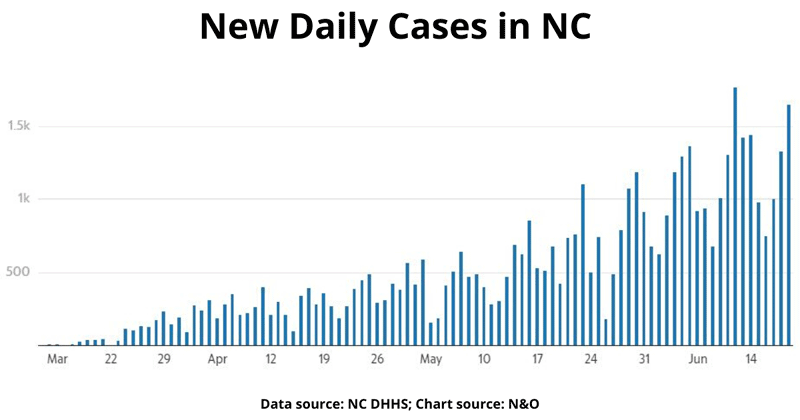 |
| BUT then you follow it with data about new daily
testing, and you see that a lot of the increase in new
daily cases seems to reflect the increase in testing.
Itís become a common observation that more testing leads
to more (confirmed) cases, and that appears to be true
in North Carolina. |
| |
|
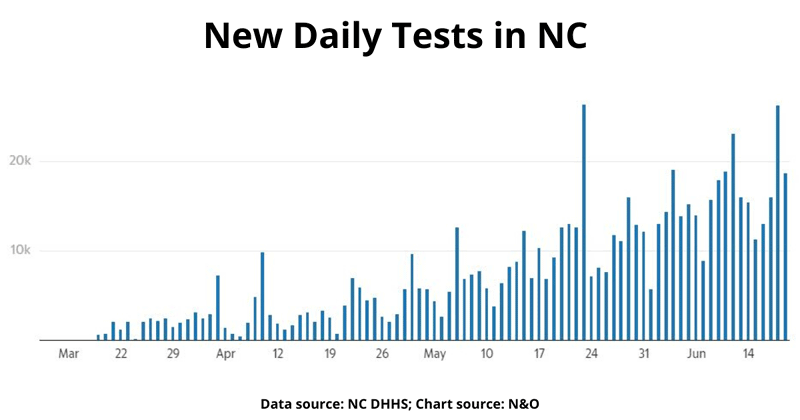 |
You might say, "Well Jeff, both those charts look pretty
messy. It's hard to tell if cases really are going up
relative to testing."
Ok, but take a look at this chart that shows the overall
percentage of tests that are coming back positive: |
| |
|
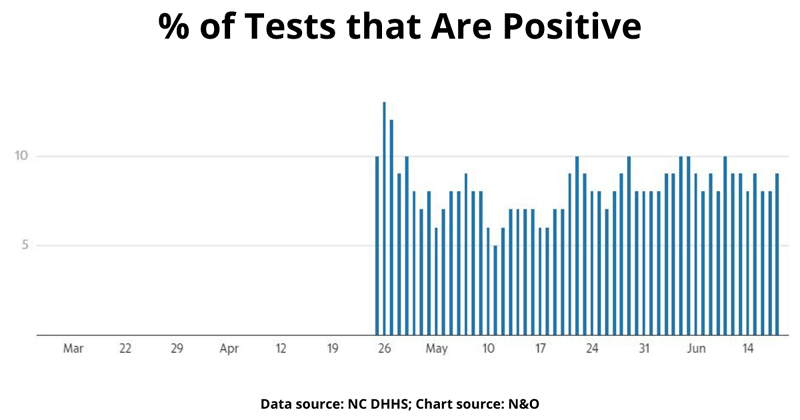 |
| That should control for the increase in testing, and
itís been flat.
Thatís good news. It means that even though we're
testing more, we're not seeing a greater share of those
tests come back positive.
BUT hereís the problem. If you look at the
hospitalization number, you see a steady increase
|
| |
|
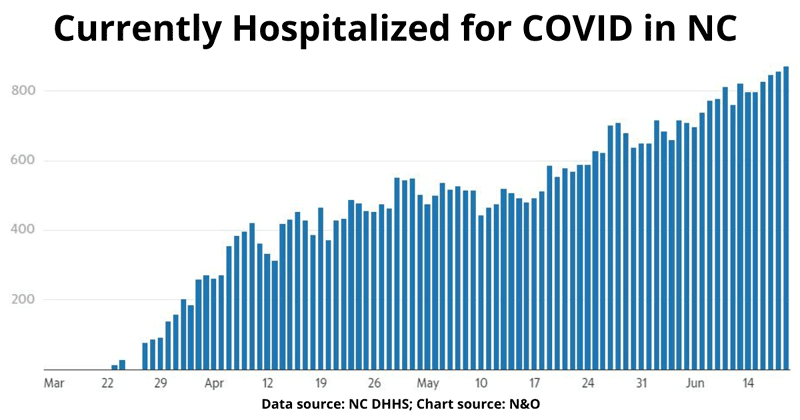 |
Thatís
not from an increase in testing. Thatís more people
getting sick.
I should note that thereís a question about this data.
Now that people are going back to hospitals for routine
procedures, theyíre all being tested when they arrive.
And some of those folks are testing positive. So now
they're in the hospital with COVID. And itís unclear to
what extent theyíre being included in this
hospitalization number. In short, we need to make sure
we are measuring people who are hospitalized for COVID,
not with COVID. But it's unclear to what extent that
explains this increase, if at all.
Then thereís the regional concern. If you zoom out and
look at our surrounding states, their daily new cases
are all going up (except Virginia, a striking
counter-example). It's reasonable to assume there's more
testing happening in each of these states, but at a
minimum this picture shows us that community spread is
ongoing throughout our region. |
| |
|
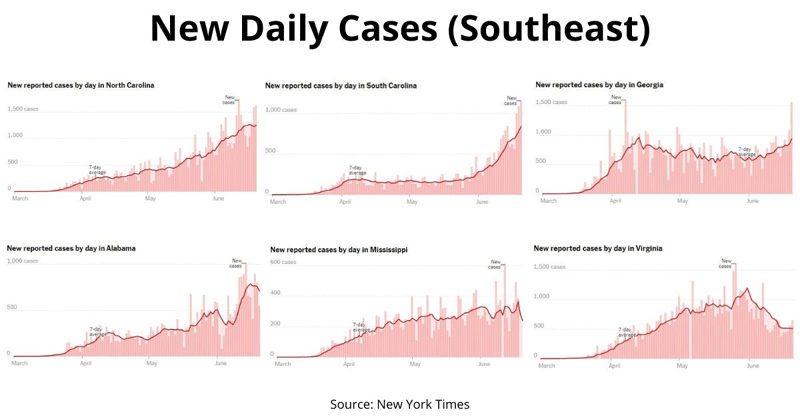 |
|
And if we zoom in on the hottest hot spot in North
Carolina - Mecklenburg County, where I live - it shows a
clear rebounding of hospitalization rates to their
highest levels yet. |
| |
|
 |
Compare that to what this chart looked like the day
Phase 2 began on May 22 (where I put a red arrow).
That's back when we saw a "sustained leveling" in
hospitalization.
A similar, statewide trend of curve flattening is what
made us comfortable enough to leave Phase 1 four weeks
ago. That trend of hospitalization flattening appears to
have been short-lived, assuming, again, accuracy of the
underlying data.
In summary, when it comes to COVID growth, we wanted
negative, we settled for flat, and it appears we got
linear.
But we don't have exponential - at least not yet.
- Sen. Jeff Jackson
|
|
| |
 Here's the situation with COVID in NC
Here's the situation with COVID in NC



